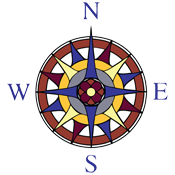Intro to Economics: Choices, Decisions, People & Policy *ONLINE/TRANSITION*
Description:
Where does the money come from for stimulus checks or a tax cut? How is a debt different than a deficit? These topics can be understood with a practical, everyday, concept-based approach to Economics. This course in applied economics spans key themes in micro-economics and macro-economics in a tangible, approachable way using cases and real examples from the community around us and avoids the traditional math-heavy, dull, and difficult study of the field.
Economics is all about choosing and then deciding. It involves the study of how and why these choices and decisions are made and then determining their outcomes for a person, a firm, or even a nation. Sometimes the study of economics is referred to as the study of the political economy because it involves public decisions. For this course, we start off with smaller units first--often called micro-economics--and stress practical or applied concepts. Later on, the course will examine the larger-scale implications for using the tools of economics to better understand public policy formation and to explore case studies on such issues as alleviating poverty, addressing climate change, and protecting public health.
In his classic text Economics, Paul Samuelson of MIT says economics is the study of how people choose and use limited resources having alternative uses. The material in this class incorporates his traditional often called neoclassical approach as well as the ideas from the so-called free-market Austrian-School economists like Henry Hazlitt and Milton Friedman. The course connects these concepts through the approachable books, Whatever Happened to Penny Candy? A Fast, Clear, and Fun Explanation of the Economics You Need For Success in Your Career, Business, and Investments and Economics in One Lesson
In short, this course aims to build a better understanding of a teen’s personal stake in using the concepts and tools of economics in daily life as well as offering a way to visualize how they are used to create the public policies. The course starts small and moves to larger subjects over time. It offers students a chance to explore ideas, evaluate case studies, discuss them in class, and then write about them. The course encourages the development of critical thinking skills using the basic terms and concepts of applied microeconomics.
Note: Note:All class meetings will be in a virtual classroom, providing synchronous online instruction via videoconferencing. At the instructors' option, the class may transition to in-person instruction later in the year as COVID-19 scenarios improve.
Prerequisites: None
LevelsThe course provides a substantive, full-credit experience in either an Honors or On-Level track. All students complete the same assignments for Semester 1. Near the end of Semester 1, students may decide to differentiate their workload and continue On-Level or at an Honors level for Semester 2. Honors students will have more in-depth assignments with longer and additional readings, more practice of synthesis and analysis, and additional writing. Both tiers offer a sunstantial, full-credit experience. Students register online for the same course.
Workload: Students should expect to spend 2-3 hours per week outside of class on homework.
Assignments: Assignments will consist of readings, worksheets, individual and group projects. All assignments will be posted on password-protected Canvas classroom management site. There, students access assignments, upload homework, take automated quizzes and tests, track grades, and message instructor and classmates.
Assessments: Points will be awarded for the competition of assignments, quizzes, and projects, and parents can assign a grade based on the number of points earned as compared to the number of points available.
Textbook/Materials: A class bundle consisting of two books and a packet of photocopied articles will be provided. Additional readings, if selected, will be identified by August 15.
Lab/Supply Fee: A class fee of $38.00 is due payable to Compass on the first day of class.
Credit: Homeschool families may wish to count this course as full credit in Economics for purposes of a high school transcript.
AP Exam Option: Students who take this course at the Honors level Semester 2 will have covered a substantial portion of the preparation for the AP exam in Microeconomics. The instructor will create a list of additional topics and analyses needed for any student who wishes to concurrently and independently study for the AP exam. Students who wish to take the AP exam must register and pay for on their own exam through the College Board in fall 2020 for the May 2021 exam.
We are sorry but registration for this event is now closed.
Please contact us if you would like to know if spaces are still available.

